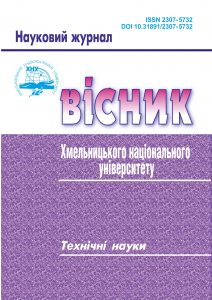ECOLOGICAL BASICS OF ANALYSIS OF THE INFLUENCE OF "GREEN" ROOFS ON URBAN CLIMATE IN URBOCENOSES
DOI:
https://doi.org/10.31891/2307-5732-2023-327-5-103-107Keywords:
green roof, urban climate, urban heat island, urbocenosis, coolingAbstract
The impact of climate change in cities is expected to increase in the future. Compared to the surrounding area, higher temperatures are particularly important as they affect the urban climate. In addition, increased surface sealing increases the effects of heavy rains. The use of green roofs is discussed as an adaptation measure that can positively address both issues. From a theoretical point of view, the benefits are clear, as one can expect to improve the microclimate and air quality, reduce runoff peaks during rains and increase biodiversity, as well as improve the insulation of buildings.
In many densely populated areas, lack of space and conflicts over land use limit the possibility of creating large green areas and parks that contribute to the improvement of the urban climate and the quality of life of residents. Available areas are needed to densify cities to create livable space, supplies, or infrastructure. Such changes can be seen as positive from the point of view of climate protection, but are seen as critical from the point of view of adapting to the effects of climate change. Cool air and adequate ventilation are especially important due to urban temperatures. It is important to keep existing cold airways free of new development and to create new cold airways through urban renewal activities. Against this background, green roofs are particularly important because they take up little or no space at street level in such densely populated urban areas. Thus, the construction of green spaces complements other forms of urban green such as parks and green areas. This article summarizes the current state of knowledge on the use of green roofs as climate adaptation measures in temperate climate zones and addresses current research needs. This is, for example, a quantitative assessment of the microclimatic effect at the city level and the impact of climate change on the greening of the buildings themselves. The article discusses the effectiveness of measures both in relation to today's climate and in connection with the climate of the future - in particular, in relation to heat stress in cities.

